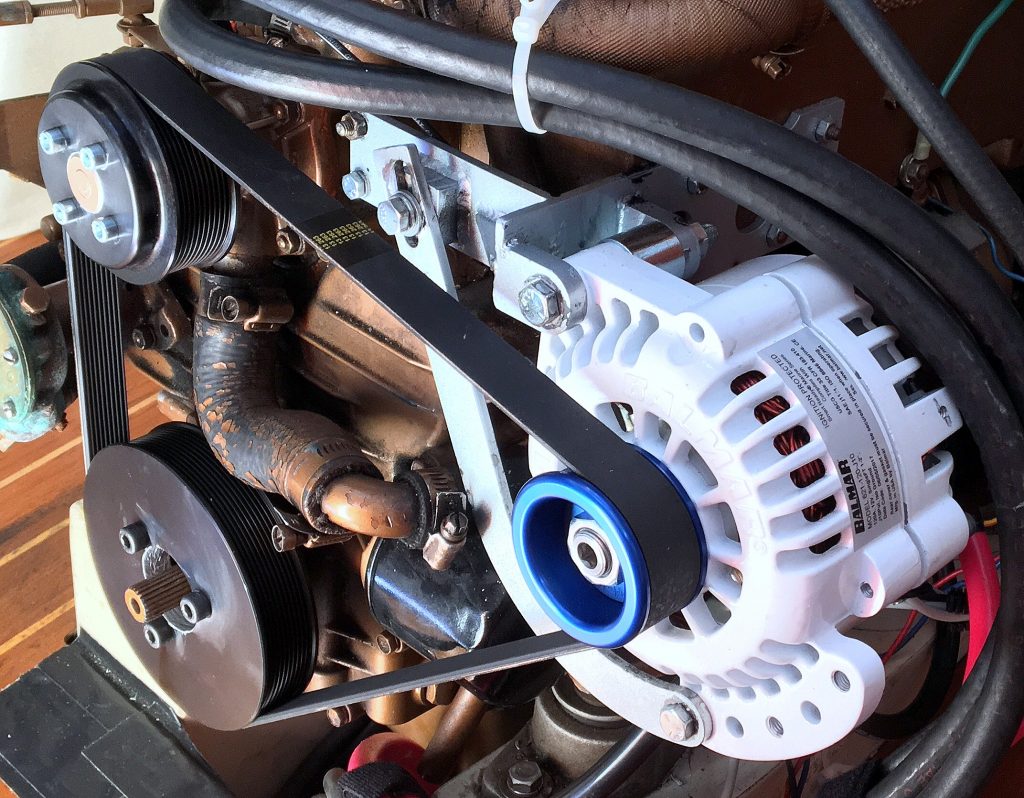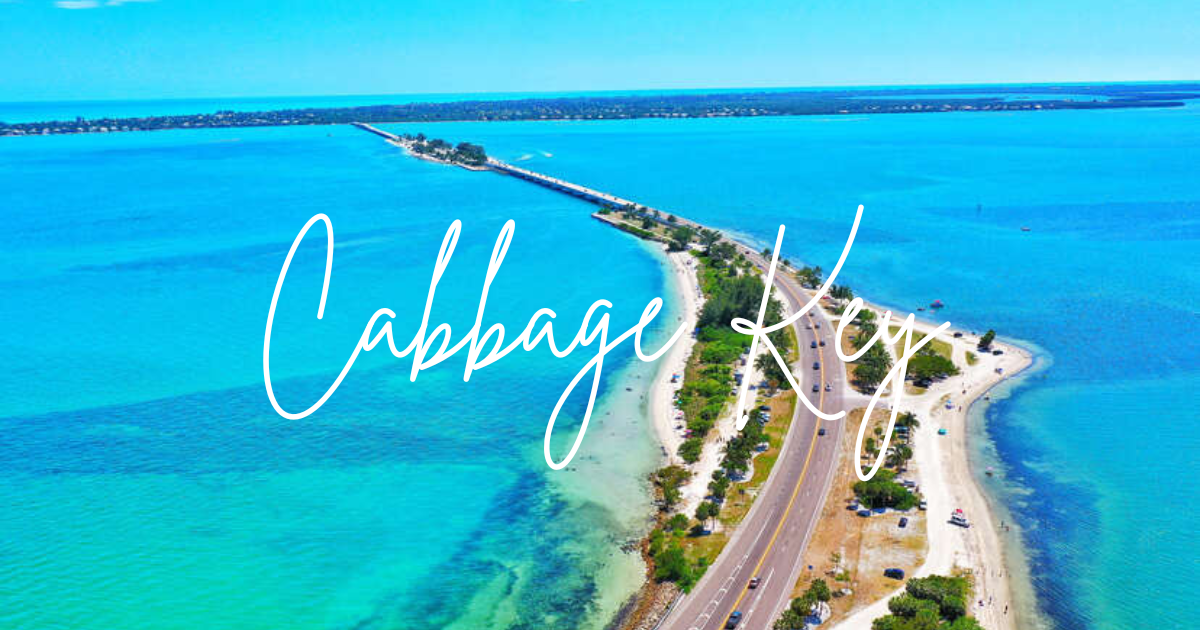4.3 MerCruiser: Essential Maintenance for Optimal Performance
The MerCruiser 4.3L engine has been a staple in marine propulsion since 1986. This V6 powerplant offers boaters a blend of performance and reliability.

The 4.3L MPI variant delivers 220 horsepower, providing ample thrust for a wide range of recreational vessels.
MerCruiser's 4.3L engine comes with features designed to enhance longevity and ease of maintenance. It boasts a closed freshwater cooling system and electro-deposition paint to combat corrosion.
The multipoint manual water drain system simplifies winterization, a boon for owners in colder climates.
Boat owners appreciate the 4.3L's 70-amp alternator, which easily powers onboard electronics. The engine's water-separating fuel filter adds an extra layer of protection, keeping the fuel system free from water contamination.

These attributes contribute to the 4.3L's reputation as a dependable choice for marine enthusiasts.
Key Takeaways
- The MerCruiser 4.3L engine offers 220 horsepower in its MPI configuration
- Features like closed freshwater cooling and electro-deposition paint enhance durability
- A 70-amp alternator and water-separating fuel filter improve reliability
Overview of Mercruiser 4.3L Engines
Mercruiser 4.3L engines are popular V6 marine power plants. They offer a good balance of performance and efficiency for small to mid-size boats.
Development and History of Mercruiser
Mercruiser, a division of Mercury Marine, began producing sterndrive engines in the 1960s. The 4.3L V6 engine was introduced in the 1980s as a smaller alternative to V8 models.
It shares many parts with the GM 350 V8, including pistons and bearings.
The 4.3L engine has gone through several changes over the years. Early versions used carburetors, while newer models feature fuel injection for better performance and fuel economy.
In 1996, Mercruiser adopted the Vortec-style intake manifold, improving airflow and power output.
These engines have proven reliable and adaptable. They can be found in various configurations, from basic models to high-output versions with advanced features.

Significance in Marine Propulsion
The Mercruiser 4.3L engine has become a staple in the boating world. It offers a good mix of power and fuel efficiency for many recreational boats. The engine's compact size allows it to fit in smaller engine compartments.
Typical 4.3L models produce between 190 and 220 horsepower. This power range suits many runabouts, ski boats, and small cruisers. The engine's torque characteristics work well for water sports and general cruising.
Mercruiser offers the 4.3L in different versions:
- TKS (Turn-Key Start) with a carburetor
- MPI (Multi-Point Injection) for better fuel economy
- Alpha and Bravo drive options for different boat types
These engines have helped make boating more accessible and enjoyable for many enthusiasts. Their reliability and widespread use mean parts and service are readily available in most boating areas.
Technical Specifications
The MerCruiser 4.3L engine is a versatile marine powerplant with several variations. It offers a balance of performance and reliability for mid-sized boats.
Engine Design and Construction
The MerCruiser 4.3L is a V6 engine with a 90-degree cylinder bank angle. It has a cast iron block and cylinder heads for durability in marine environments.
The engine's bore is 4.00 inches and its stroke is 3.48 inches, giving a total displacement of 262 cubic inches (4.3 liters).
This V6 uses a conventional pushrod valvetrain with two valves per cylinder. The firing order is 1-6-5-4-3-2. Most models have a compression ratio between 9.4:1 and 9.8:1, depending on the specific version.
The 4.3L engine weighs about 840 pounds (381 kg) in its base configuration.

Performance Metrics
MerCruiser 4.3L engines come in various power outputs. The base carbureted version produces around 190 horsepower at 4,800 rpm.
Higher-output fuel-injected models can make up to 225 hp.
Torque figures range from about 280 lb-ft for carbureted engines to 310 lb-ft for fuel-injected versions. Peak torque typically occurs between 3,200 and 3,600 rpm.
Fuel consumption varies by model and operating conditions. At cruise speeds, these engines typically use 6-8 gallons per hour.
The 4.3L has a recommended maximum engine speed of 4,400-4,800 rpm, depending on the model.

4.3L MPI vs Carbureted Models
MerCruiser offers both multi-point fuel injection (MPI) and carbureted versions of the 4.3L engine. MPI models provide several advantages:
- Better fuel efficiency
- Easier starting, especially when cold
- Smoother idle and low-speed operation
- More consistent performance in varying conditions
MPI engines also tend to have slightly higher power outputs. A typical 4.3L MPI produces 220-225 hp, while carbureted versions make 190-200 hp.
Carbureted models are simpler and can be easier to maintain for some boaters. They're also typically less expensive upfront.
Both versions use a 12-volt electrical system with a 65 or 70-amp alternator.
Key Features and Systems
The 4.3 Mercruiser engine boasts several important features and systems that make it a top choice for boaters. These systems work together to provide reliable performance, efficiency, and ease of maintenance.
Ignition and Electrical Systems
The 4.3 Mercruiser uses a robust ignition system for dependable starts and smooth running. It has a Thunderbolt V electronic ignition that provides a strong spark to the plugs. This system doesn't need much upkeep.
The engine has an alternator to keep the battery charged. It powers the boat's electrical needs too.
Good spark plugs are key for the engine to run well. Boaters should check and change them as needed.
The electrical system includes fuses and circuit breakers to protect parts from damage. A wiring harness connects all the electrical parts neatly.
Fuel Delivery and Efficiency
The 4.3 Mercruiser has a fuel system that gives the engine the right amount of gas. It uses a carburetor or fuel injection, depending on the model year.
Fuel injection systems offer better efficiency and power. They spray fuel right into the engine's intake. This helps the engine use less gas and run smoother.
The engine can use gas with up to 10% ethanol. It has a fuel pump to move gas from the tank to the engine. There's also a fuel filter to keep dirt out of the system.
Boaters like the 4.3 for its good fuel economy. It gives lots of power without using too much gas.

Cooling and Exhaust Systems
The 4.3 Mercruiser uses a cooling system to keep the engine from getting too hot. It pumps water from outside the boat through the engine. This takes away heat.
There's a thermostat that helps control the engine temp. It opens to let more water flow when the engine gets hot.
The system has hoses and a water pump to move the cooling water. A raw water pump pulls in water from outside.
It's important to check this pump often. If it fails, the engine can overheat fast.
The exhaust system pushes out hot gases from the engine. It uses pipes and a muffler to quiet the noise. Some setups send the exhaust out through the propeller hub.
Maintenance and Service Guide
Regular care keeps the 4.3 Mercruiser running well.
Changing the oil and filter is a key task. Most boaters do this once a year or every 100 hours of use.
The engine needs its spark plugs checked and changed at set times. The fuel filter should be replaced yearly to keep the fuel system clean.
Boaters should check the belts for wear and proper tension. The cooling system needs checks for leaks or clogs.
It's smart to flush it with fresh water after use in salt water.
The water pump impeller is a part that often needs replacing. It's good to change it every few years. Keeping an eye on fluid levels helps catch problems early.
Integration and Installation
Installing a 4.3 MerCruiser engine requires careful planning and attention to detail. The right components and proper setup are key to optimal performance.
Compatible Drives and Propulsion Systems
The 4.3 MerCruiser pairs well with Alpha and Bravo drives.
Alpha drives suit boats up to 26 feet, while Bravo drives work for larger craft. Bravo Two and Bravo Three drives offer different propeller configurations for varied applications.
The engine's propshaft horsepower ranges from 190 to 220 HP, depending on the model. This power suits a wide range of recreational boats.
When choosing a drive, boaters must consider their vessel's size, weight, and intended use. The right match ensures efficient power transfer and handling.

Mounting and Alignment Procedures
Proper engine mounting is crucial for smooth operation. The installer must use the correct mounts and follow the manufacturer's guidelines closely.
The engine needs to sit level and square in the boat. Shims may be needed to achieve proper alignment.
A straight edge and feeler gauges help check alignment at multiple points.
Correct alignment of the engine to the drive unit is vital. Misalignment can cause vibration, wear, and reduced efficiency.
The alternator and other accessories must be installed per the manual. Proper belt tension is important for reliable operation.
Performance and Handling
The 4.3 MerCruiser engine offers solid power and reliable performance for recreational boating. Its design balances fuel efficiency with responsive acceleration and smooth handling across a range of vessel types and conditions.
Throttle and Power Control
The 4.3 MerCruiser provides good throttle response and power delivery. At lower RPMs, it offers ample torque for getting boats on plane quickly. The engine control system allows for precise adjustments to match different load conditions.
Proper propeller selection is key for optimizing performance. A well-matched prop lets the engine reach its ideal operating range of 4400-4800 RPM at wide-open throttle.
Many boaters find the 4.3's power adequate for waterskiing and wakeboarding with smaller boats. Larger or heavily-loaded vessels may benefit from upgrading to a higher-horsepower option.

Handling Characteristics in Vessels
The 4.3 MerCruiser contributes to predictable handling in most applications. Its relatively compact size allows for good weight distribution, especially in smaller runabouts and cruisers.
Power steering systems on 4.3-equipped boats typically offer light, responsive helm control. This reduces driver fatigue during long days on the water.
In neutral, the engine idles smoothly with minimal vibration. Shifting into gear is generally smooth, though you need to adjust the shift cable properly for crisp engagement.
Trim adjustment allows fine-tuning of running attitude. This helps optimize fuel efficiency and ride comfort across different speeds and sea conditions.
Accessories and Options
The 4.3 MerCruiser engine can be enhanced with various add-ons to boost performance and longevity. These accessories help boaters get the most out of their marine power plant.
Enhancements and Upgrades
MerCruiser offers several products to optimize the 4.3 engine. The MerCathode system protects against galvanic corrosion, extending the life of underwater components. For saltwater use, the SeaCore system provides additional corrosion resistance.
A serpentine belt upgrade improves reliability and reduces noise. It replaces the older V-belt setup, offering better tension and less slippage.
Performance buffs may consider aftermarket intake manifolds and exhaust risers. These can increase horsepower and torque, though at the cost of higher fuel consumption.
Vibration-dampening motor mounts help smooth out engine operation. This reduces wear on other components and improves onboard comfort.
Digital throttle and shift controls offer precise engine management. They eliminate cable stretching issues found in mechanical systems.
Reliability and Longevity
The 4.3 Mercruiser engine has a mixed reputation for reliability. It offers decent longevity when properly maintained, but some common issues can arise over time.
Warranty and Support
Mercruiser typically provides a limited warranty on new 4.3 engines. This covers defects in materials and workmanship for a set period, often 1-2 years. Some dealers may offer extended warranties for added peace of mind.
Mercury Marine has a network of authorized service centers. These technicians are trained to work on 4.3 Mercruiser engines. They can help with warranty claims and repairs.
Owners should keep detailed maintenance records. This can be important for warranty coverage. Regular oil changes and tune-ups are key for long engine life.
Common Issues and Troubleshooting
Low oil pressure is a frequent problem with 4.3 Mercruiser engines. This can be caused by worn bearings or a faulty oil pump. Regular oil changes help prevent this issue.
Overheating can occur if the thermostat sticks closed. Signs include high temperature readings and poor performance. Replacing the thermostat is a simple fix.
Starter motor failures sometimes happen on older 4.3 engines. A clicking sound when trying to start often indicates this problem. Corrosion from saltwater use can speed up starter wear.
Fuel system issues may develop over time. Clogged injectors or a worn fuel pump can cause rough running. Using fuel stabilizer during storage helps prevent these problems.
Practical Considerations
The 4.3 Mercruiser engine offers a balance of performance and efficiency for many boaters. Its fuel consumption and suitability for different vessels are key factors to consider.
Fuel and Operating Costs
The 4.3 Mercruiser burns about 10-12 gallons per hour at cruising speeds. This varies based on boat weight, sea conditions, and throttle setting.
Regular 87 octane gasoline is suitable for most 4.3 models. Some high-performance versions may require premium fuel.
Proper maintenance helps optimize fuel economy. Regular oil changes, clean filters, and tuned ignition systems all contribute to better efficiency.
Installing a fuel flow meter allows boaters to monitor consumption in real-time. This helps in finding the most economical cruising speed.
Boat Types and Usage Scenarios
The 4.3 Mercruiser suits a wide range of boats up to about 24 feet in length. It's common in runabouts, small cabin cruisers, and pontoon boats.
For fishing, the engine provides good low-end torque for trolling. It also offers enough power for water skiing and tubing on family outings.
In pontoon boats, the 4.3 delivers ample push for leisure cruising. It handles the added weight of these craft without strain.
Runabouts benefit from the engine's balance of power and fuel efficiency. It's ideal for day trips and weekend excursions on lakes and coastal waters.
User Guides and How-To's
The 4.3 Mercruiser engine requires proper operation and maintenance for optimal performance. Owners should familiarize themselves with startup procedures and routine care to keep their engine running smoothly.
Starting Up and Basic Operations
Before starting a 4.3 Mercruiser, check oil and coolant levels. Inspect hoses and belts for wear. Turn the key to activate the electric fuel pump, listening for it to prime the system.
Once primed, turn the key fully to crank the engine. It should start within a few seconds. Let it warm up at idle for 2-3 minutes before increasing RPMs.
Monitor gauges closely during initial operation. Oil pressure should rise quickly. Water temperature should climb steadily to normal operating range.
When underway, avoid prolonged operation at full throttle until the engine is fully warmed up. This allows all components to reach proper working temperatures.
Routine Maintenance and Inspections
Change engine oil and filter every 100 hours or annually. Use Mercury Full-Synthetic 20W-40 oil. The 4.3L engine takes about 3.8 liters (4 quarts).
Check the coolant level in the freshwater cooling system regularly. Top up with a 50/50 mix of antifreeze and water if needed.
Inspect the flame arrestor monthly, cleaning or replacing as necessary. This crucial component prevents engine compartment fires.
Examine drive belts for proper tension and condition. Replace any that show signs of cracking or fraying. Loose belts can cause overheating or alternator issues.
Clean or replace fuel filters annually. A clogged filter can starve the engine of fuel, leading to poor performance or stalling.
Frequently Asked Questions
MerCruiser 4.3L engines are popular marine power plants. Boat owners often have questions about their care and performance. Here are answers to some common queries.
What type of oil is best suited for a 4.3L MerCruiser engine?
For 4.3L MerCruiser engines, a high-quality 25W-40 marine grade oil is ideal. This oil provides excellent protection against wear and corrosion in marine environments.
How does one determine the horsepower of a 4.3L MerCruiser?
The horsepower of a 4.3L MerCruiser varies by model year and configuration. Generally, these engines produce between 190 and 220 horsepower.
To find the exact rating, check the engine specifications or consult the owner's manual.
What are the specifications of a 4.3L MerCruiser engine?
The 4.3L MerCruiser is a V6 engine with a displacement of 262 cubic inches. It has a bore of 4.00 inches and a stroke of 3.48 inches.
The engine typically uses a 2-barrel carburetor or fuel injection system, depending on the model year.
What might one expect to pay for replacing a 4.3L MerCruiser engine?
Replacing a 4.3L MerCruiser engine can cost between $4,000 and $7,000. This price includes the new engine and installation.
The exact cost depends on the specific model, location, and labor rates.
How does the performance of the 4.3L MerCruiser compare in terms of reliability and longevity?
The 4.3L MerCruiser is known for its reliability and long lifespan. With proper maintenance, these engines can last 1,500 to 2,000 hours of operation.
Regular oil changes and following the maintenance schedule are key to maximizing engine life.
What are the typical issues encountered with 4.3L MerCruiser engines?
Common problems with 4.3L MerCruiser engines include starter motor failures, overheating, and carburetor issues. Fuel pump problems can also occur in older models.
Regular maintenance and prompt attention to unusual noises or performance changes can prevent many issues.
Charlie is Editor-in-Chief of Sea Magazine







